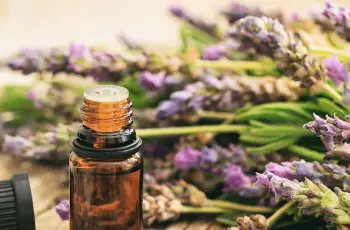

What Is Cleansing Oil and Who Should Use It?
Cleansing oil is a skincare product designed to remove makeup, dirt, and excess oil from your face. It’s gentle, moisturizing, and suitable for most skin types, including oily and dry skin.
Before 2014, cleansing oils were mostly used by professionals in spas. Today, they are a common part of everyday skincare routines for people around the world.
If you’re new to cleansing oils, don’t worry. We’ll explain what they are, how they work, how to use them, and which skin types benefit most.
What Is Cleansing Oil?
Cleansing oils are facial cleansers made with oils that dissolve dirt, makeup, and excess sebum from your skin. They’re often used as the first step in a double cleansing routine.
Unlike harsh cleansers, cleansing oils don’t strip the skin. They remove “bad” oil and impurities while keeping your skin’s natural moisture barrier intact.
Despite being oil-based, they rinse off easily with water and don’t leave a greasy residue behind. Most work well without needing heavy scrubbing.
How Does Cleansing Oil Work?
Cleansing oils use the principle that “like dissolves like.” The oil in the cleanser binds to the oil, makeup, and grime on your face.
When you massage it in, it breaks down impurities like:
Dirt and dead skin cells
Oil and sweat buildup
Sunscreen and makeup
Pollution particles
Once you rinse with water, the formula emulsifies. This means it turns milky and lifts all the gunk away, leaving your skin fresh and soft.
Unlike some cleansers, oil cleansers don’t penetrate the pores deeply. Instead, they clean the surface without disrupting your skin’s balance.
What Are the Benefits of Cleansing Oil?
Cleansing oils offer many advantages that make them stand out from gels, foams, and micellar waters. Here are some of the top benefits:
Gentle on skin: They cleanse without drying or irritating the skin.
Moisturizing: Many are packed with hydrating ingredients like Vitamin E or jojoba oil.
Effective makeup remover: They remove waterproof makeup with ease.
Preserves skin barrier: They support a healthy skin microbiome and pH balance.
Good for double cleansing: They work great as the first step in a two-part cleanse.
Your skin feels soft, not tight, after cleansing—perfect for dry or sensitive skin.
How to Use Cleansing Oil (Step-by-Step)
Each brand may have different directions, but most cleansing oils are used like this:
Pump or pour a small amount of oil into your palm.
Rub your hands together to warm the oil slightly.
Apply the oil directly to your dry face.
Massage it gently in circles, covering all areas.
Focus on tough spots like around the nose and mascara on lashes.
Add a little water to your hands and massage again—this emulsifies the oil.
Rinse thoroughly with warm water or a soft washcloth.
Follow up with a second cleanser if needed (this is called double cleansing).
Pat your face dry with a clean, soft towel.
Always check the label for brand-specific instructions.
What Is Double Cleansing?
Double cleansing is the process of using two cleansers—one after the other. You start with an oil-based cleanser and follow it with a water-based one.
Why do this? Because the first cleanse removes oil-based impurities like makeup, sunscreen, and sebum. The second cleanse removes sweat, dirt, and leftover residue.
This two-step method leaves your skin completely clean without stripping it. It’s especially useful for people who wear a lot of makeup or live in polluted areas.
Who Should Use Cleansing Oil?
Cleansing oil can work for all skin types. Here’s a breakdown of how different skin types benefit:
Oily Skin
It might seem odd to use oil on oily skin, but it can actually help. Oil-based cleansers dissolve excess sebum without drying your skin out.
When you strip oily skin too much, it may overproduce oil to compensate. Cleansing oils prevent that by maintaining your skin’s natural balance.
Choose formulas labeled non-comedogenic and free of pore-clogging oils. Look for added ingredients like tea tree oil, salicylic acid, or green tea.
Dry Skin
Dry skin types will love cleansing oils. They’re often rich in nourishing oils like avocado, almond, or camellia oil, which soften the skin.
They gently remove impurities while locking in moisture. Cleansing oils leave dry skin feeling smooth and hydrated instead of tight or flaky.
Look for oils with vitamin E or hyaluronic acid to maximize hydration.
Sensitive Skin
Cleansing oils are often free from harsh chemicals, making them a gentle choice for sensitive skin.
Since they don’t contain drying surfactants, they reduce redness and irritation. Always check labels for fragrance-free or hypoallergenic options.
Combination Skin
Combination skin benefits from the balancing nature of cleansing oils. They hydrate dry areas while controlling oil in the T-zone.
The key is to find a formula with lightweight oils that won’t clog pores or weigh down your skin.
What Ingredients Should You Look For?
When picking a cleansing oil, choose ingredients suited to your skin needs. Here are some helpful oils and boosters:
Jojoba oil: Mimics skin’s natural oil; balances all skin types.
Grapeseed oil: Lightweight; great for acne-prone skin.
Sunflower oil: Rich in Vitamin E; supports moisture.
Green tea extract: Fights free radicals and soothes skin.
Vitamin C: Brightens and protects against damage.
Avoid mineral oil, coconut oil, or essential oils if you’re prone to breakouts or irritation.
Can You Use Natural Oils Like Baby Oil or Coconut Oil?
While baby oil and coconut oil can moisturize the body, they’re not ideal for cleansing your face.
They may clog pores or leave behind residue that leads to breakouts. Stick with cleansing oils specifically formulated for the face.
These are designed to emulsify with water and rinse away completely, unlike plain oils.
Should You Use Cleansing Oil If You Wear Makeup Daily?
Yes, especially if you wear foundation, SPF, or waterproof makeup. Cleansing oil breaks through even the most long-wearing products.
Heavy makeup users should double cleanse to ensure nothing is left behind. This keeps pores clear and prevents breakouts or irritation.
Even if you wear light makeup, oil cleansing can be beneficial as it lifts away pollution and daily grime.
How Often Should You Use Cleansing Oil?
Most people use it once per day—usually in the evening. This helps remove the day’s makeup, sunscreen, and dirt before bed.
In the morning, you can follow with a gentle cream or foam cleanser instead, depending on your skin’s needs.
What Are the Drawbacks of Cleansing Oil?
There are few disadvantages, but it’s worth noting:
Some formulas may contain fragrance or heavy oils that irritate sensitive skin.
If not rinsed properly, they may leave a film or cause breakouts.
Some people need a second cleanser to feel truly clean.
Always patch test new products and pay attention to how your skin reacts.
Final Thoughts: Is Cleansing Oil Right for You?
Cleansing oils offer a gentle yet powerful way to cleanse the skin. They hydrate, protect, and support a healthy complexion while removing all types of buildup.
They work well for nearly everyone—but especially dry, sensitive, or combination skin types.
If you wear makeup daily or struggle with dry patches, cleansing oils can make a big difference in your routine.
To get the best results, choose the right formula for your skin type and follow up with a second cleanser if needed.


